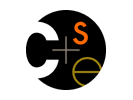|
|
|

|
|
Various links related to the class, but not required reading.
-
ASUS VX97 System Board
-
Sources for tear down systems
-
A. K. Dewdney
books and articles
- Chart (660KB) showing trends in computer power
- Subradiante microfleems
- There is a version of
Linux for the Playstation2, a MIPS based system with fancy
graphics hardware.
- The mixture of high power embedded computer systems and sophisticated mechanical systems can
lead to all sorts of new capabilities, including dancing robots (7MB WMV,
net copy,
local copy), starring the
Sony QRIO.
- The
MIPSPro Assembly Language Programmer's Guide is available
locally and from
SGI. Chapter 7, Linkage Conventions, has a pretty good explanation
of how a stack frame is really set up.
- High density
memory wires.
-
Assembly language references for the
VAX and the
PowerPC are available on-line. There is also an old
Programmer's Introduction to the PowerPC that was originally provided by Apple, although
I can't find it on their site anymore. It is a tutorial, rather than a reference
document.
-
The Standard Performance Evaluation Corporation (SPEC) web site
www.spec.org has information about the
benchmarks that their various interest groups have put together. There was an article
SPEC CPU2000: Measuring CPU Performance in the New Millennium
in IEEE Computer magazine in July 2000 about the
SPEC CPU 2000 benchmark.
The Digital Continuous Profiling Infrastructure
home page has information about that
profiling system, including a link to Digital Systems Research Center Technical Note 1997-016
titled
Continuous Profiling:
Where Have All the Cycles Gone?.
Built-in performance counters to support accurate, fine-grained, low-overhead profiling are
features in many modern processors, including the
Intel Pentium
, the
IBM Power2, the
DEC Alpha (see chapter 8), the
MIPS 10000,
and HP PA-8000.
-
The
SETI@Home and
Folding@Home projects are
using computers around
the world connected through the Internet to accomplish very processor intensive tasks.
The
Beowulf Project uses local clusters of machines to also
create very powerful systems for accomplishing supercomputer sized tasks.
-
One of the authors of the
Inside MS Windows 2000
book, Mark Russinovich, maintains a web
site called
www.sysinternals.com
where he has a number of interesting tools available for delving into the details of
Windows 2000 as it executes.
|


 CSE Home
CSE Home  About Us
About Us Search
Search Contact Info
Contact Info